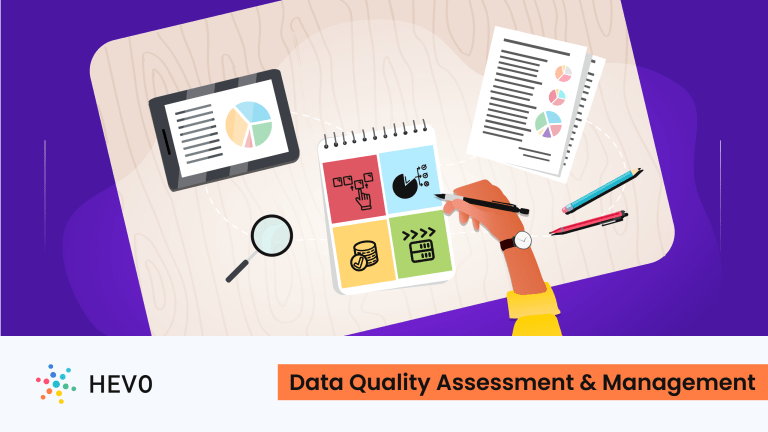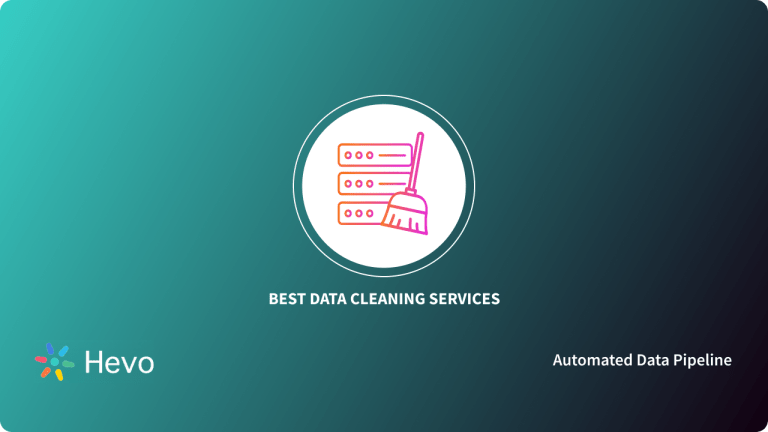The quality of your data analysis and the insights derived directly depends on the quality of the data you feed. This is why data cleaning is crucial in ensuring your datasets are accurate, consistent, and reliable for further analysis. Python, a versatile programming language, has many tools with various functionalities to streamline and optimize this process.
This article will explore some prominent data cleaning tools in Python for data science. You will also explore the features and benefits of these tools, emphasizing their role in ensuring data integrity and reliability for downstream analysis.
Table of Contents
What Is Data Cleaning and Why Is It Important?
Data cleaning is the process of identifying and rectifying errors, inconsistencies, and inaccuracies within a dataset to ensure its completeness and reliability. It involves various tasks, such as handling missing or duplicate data, correcting formatting issues, removing outliers, and resolving inconsistencies across different data sources. You can efficiently address these common issues by leveraging Python’s extensive libraries, such as NumPy, Pandas, Scikit-learn, and more.
By ensuring the data’s accuracy, you can build trustworthy analyses and reports, leading to better-informed and data-driven business strategies, improved operations, and enhanced performance. This helps your organization achieve the full potential of its data assets. Now that you understand the importance of data cleaning, let’s delve into the most common data cleaning tools you can employ in Python.


The Most Helpful Python Libraries for Data Cleaning
Here is a list of the best data cleaning tools in Python that you can use for data cleaning. These tools offer a comprehensive toolkit for addressing noise correction, outliers, and anonymization. Let’s explore what each has to offer to enhance the quality of your data.
1. Pandas
Pandas is a Python library that simplifies working with data. It offers a table-like structure (DataFrame) for easy manipulation and analysis. Pandas excels at cleaning, transforming, and preparing your data for further exploration.
- You can use isnull() to detect the presence of missing entries, dropna() to remove them, and fillna() to impute with mean, median, or user-defined values.
- The drop_duplicates() function helps you remove duplicate values based on a column or criteria and avoids skewed analysis.
- You can also deal with inconsistent formatting by using string manipulation methods like strip() to remove whitespaces and lower() or upper() methods for consistent capitalization.
- The describe() function explores your data, provides summary statistics, and identifies outliers.
With Pandas, you can easily prepare data for further analysis by facilitating data transformations like normalization, scaling, and encoding categorical variables.
With Hevo, you can seamlessly integrate data from multiple sources into any data warehouse, ensuring your organization has a unified view of its data assets.
Why Use Hevo for Data Warehouse Integration?
- Broad Source and Destination Support: Connect to over 150+ sources, including databases, SaaS applications, and more, and load data into your preferred data warehouse.
- Real-Time Data Sync: Keep your data warehouse up-to-date with real-time data flow, ensuring your analytics are always based on the latest information.
- No-Code Platform: With Hevo’s user-friendly interface, you can easily set up and manage your data pipeline without any technical expertise.
2. NumPy
NumPy is a fundamental Python library for numerical computing and one of the best big data cleaning tools. It supports arrays, matrices, and mathematical functions, making it efficient to manage large datasets. NumPy’s array manipulation functions allow quick and easy data transformations, such as reshaping, indexing, and filtering.
You can use the percentile and interquartile range (IQR) functions to identify and handle outliers. The vectorized operations allow you to perform cleaning operations on entire arrays for faster processing. You can also use operations like boolean indexing to filter data based on specific conditions and remove unwanted entries.
3. Scikit-learn
Scikit-learn is primarily known for its machine learning (ML) algorithms. It is a versatile library that also includes modules for data preprocessing, ML model selection, and evaluation. The preprocessing utilities include scaling features, imputing missing values, encoding categorical variables, and more.
- You can use the StandardScaler and MinMaxScaler to perform scaling and normalization. They transform the numerical features into a standard scale, ensuring they contribute equally during analysis.
- The SimpleImputer class allows you to fill in missing values using mean, median, or a fitted model.
- You can also use OneHotCoder or LabelEncoder to convert categorical data into numerical representations and achieve better analysis results.
Additionally, Scikit-learn offers tools for feature selection and dimensionality reduction, which are crucial for improving machine learning model performance and reducing overfitting. By incorporating it into your data cleaning pipeline, you can seamlessly integrate data preprocessing and model-building stages, streamlining the ML workflow and interpretation of analysis results.
4. PyJanitor
PyJanitor is a Python library that extends Pandas’ functionality by providing convenient data cleaning through method chaining. Method chaining allows you to combine multiple data-cleaning processes while having precise control over the order of operations. It is similar to parallel processing instead of the imperative programming style common in Pandas, enhancing efficiency in data manipulation.
PyJanitor takes inspiration from the R package Machine Learning and is a user-friendly API for examining and eliminating noise from raw datasets. You can perform various data-cleaning processes, such as:
- Missing Value Management:
- is_missing(): To identify missing values.
- fill_na(): To impute missing values.
- remove_na(): To eliminate rows/columns containing missing values.
- String Manipulation:
- clean_names(): To ensure consistent variable/column names.
- remove_accents(): To remove unwanted accents from your text data.
- Data Subset Selection & Filtering:
- select_vars(): To choose specific variables/columns of your interest.
- filter(): To filter data based on conditions.
- Data Rearrangement:
- arrange(): To reorder data rows.
5. Scrubadub
You can use Scrubadub to identify and anonymize personally identifiable information (PII) in unstructured text data, ensuring data privacy. This makes it particularly useful in the finance and healthcare sectors, where compliance with regulations like GDPR to protect sensitive individual data is crucial. Scrubadub can effectively remove or mask various PII, such as email addresses, URLs, names, addresses, username or password combinations, etc. You can use it as a beginner, as it offers a straightforward and user-friendly API.
6. Cleanlab
Cleanlab is a Python library explicitly designed to debug and clean noisy dataset labels in machine learning. You can use its algorithms to implement noise-aware classification during the model training process, improving the robustness of your models.
Cleanlab also helps correct mislabeled data points, resulting in more accurate datasets. Its visualization tools help you understand the relationships between predicted probabilities, true labels, and noisy labels, providing insights into their characteristics. Additionally, you can integrate it with Scikit-learn and leverage your existing workflows.
You can explore other data cleaning tools Python offers based on your specific needs, such as Arrow, Tabulate, Seaborn, and others. These libraries provide diverse functionalities to cater to your requirements, ensuring you can seamlessly perform further analysis or data modeling.
Data Integration for Streamlined Data Cleaning with Hevo
While Python libraries offer powerful tools for data cleaning, managing high-volume data from multiple sources can become complex. This is where you can leverage Hevo, a real-time data integration platform that cost-effectively automates data pipelines according to your needs. It is a no-code ELT tool with a library of over 150 pre-built connectors. The platform helps you consolidate data from various sources, like SaaS applications and CRMs, into a central location.
Hevo jumpstarts your basic data preprocessing by providing user-friendly drag-and-drop and Python-based transformations before loading your datasets to the target destination. It executes your transformation scripts using Python 2.7, including all the standard libraries.
Using the Change Data Capture (CDC) feature, you can automate schema mapping based on the source and synchronize your destination with any updates. Additionally, Hevo provides incremental data load, a feature that helps you transfer only the modified data in real time. This optimizes bandwidth utilization at both the source and destination, ensuring a smooth data flow for your data analysis process.
Wrapping Up
This article introduced you to various data cleaning tools in Python, such as NumPy, Pandas, Cleanlab, and more. These tools streamline your data preprocessing and transformations, enabling you to conduct deep analysis without any dirty data skewing your results. You can address missing data, duplicate data, inconsistencies, and outliers, ensuring your analysis is accurate and reliable. Additionally, you can gain valuable insights from your datasets by leveraging these libraries and packages.
Want to take Hevo for a spin? Sign up for a 14-day free trial and experience the feature-rich Hevo suite first hand. You can also have a look at the unbeatable Hevo pricing that will help you choose the right plan for your business needs.
FAQs
How do I make an automated data cleaning in Python for ML? Is there any way to do that?
Yes, you can automate data cleaning in Python for machine learning workflows. Libraries like Pandas and Scikit-learn provide functions to streamline repetitive tasks like handling missing values and encoding categorical variables. You can explore these data cleaning tools in Python for data mining and learn about their functionalities to build custom data-cleaning pipelines tailored to your needs. You can also integrate Hevo, a data integration platform, to automate data extraction, loading, and basic transformations before feeding your data into the cleaning pipeline.
Is Python a data cleaning tool?
Python itself is not a data cleaning tool, but it offers libraries like Pandas and NumPy that are widely used for efficient and customizable data cleaning processes.
How to do data cleaning in Python?
Use Pandas to handle missing values (.fillna() or .dropna()), remove duplicates (.drop_duplicates()), correct data types (.astype()), and standardize data formats with its powerful DataFrame operations.





